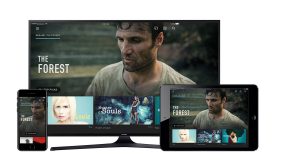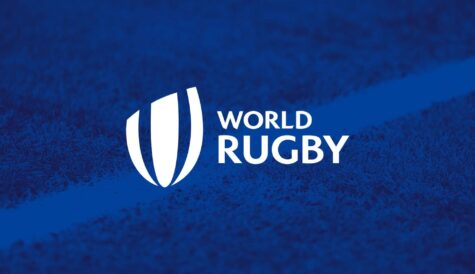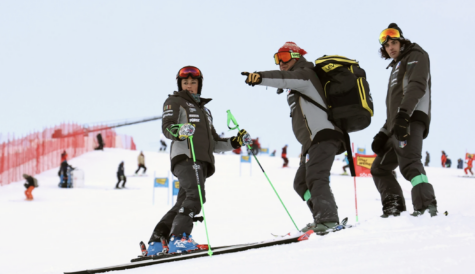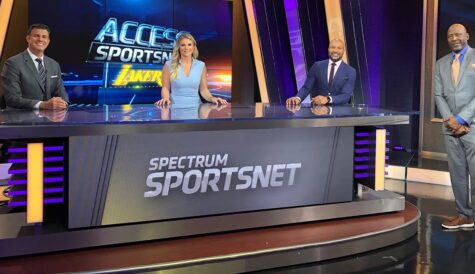Lines of sight
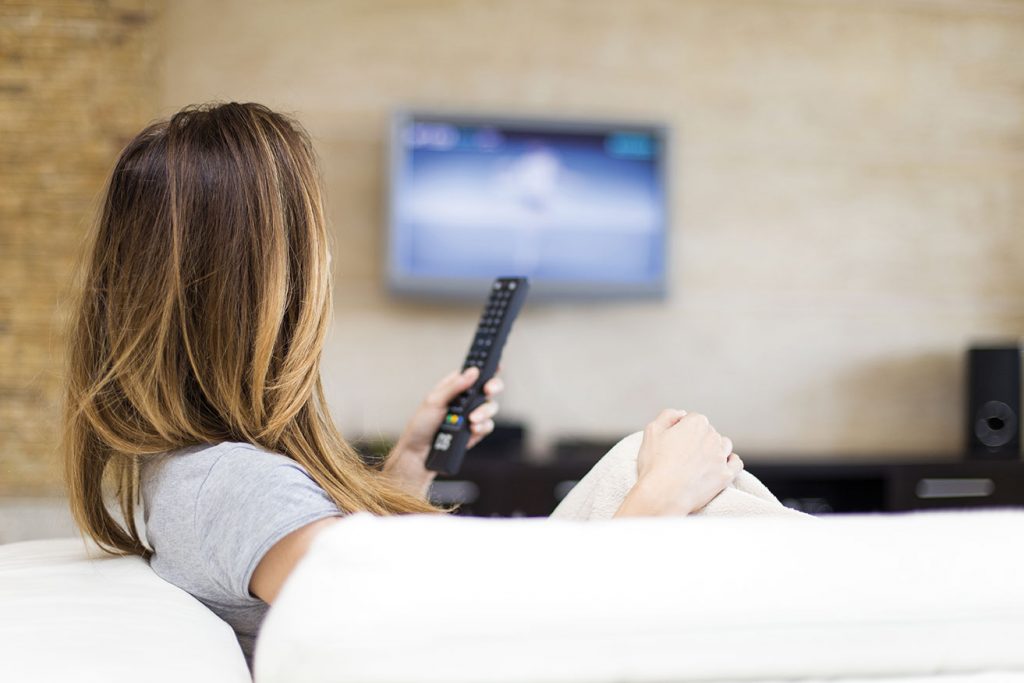 Broadcasters are looking to new hybrid delivery technologies to ensure that their services stay relevant in the digital age. Anna Tobin reports on the latest developments.
Broadcasters are looking to new hybrid delivery technologies to ensure that their services stay relevant in the digital age. Anna Tobin reports on the latest developments.
The demise of broadcast TV has been predicted for years as audiences increasingly choose to watch content online and on-demand. It’s not dead yet though. In fact, broadcast businesses across Europe are very much live and kicking.
The word live is key here. Live TV remains the USP of broadcasters. They have the legacy infrastructure that ensures that they can transmit live programming to the greatest footprint in the highest quality, something that the OTT world is not yet coming close to. What broadcasters are quickly learning, however, is that it makes business sense to build supplementary streaming services.
The technology behind streaming media is still not perfected, which is the primary reason broadcasters haven’t fully embraced it. “The internet was not meant for delivery of broadcast content from a single source to multiple people and it wasn’t meant for real-time delivery. It was always meant for file delivery,” says Gideon Gilboa, SVP of product and marketing at Kaltura’s media and telecom group. “From a technology point of view, there is no doubt that at the moment at least there are still some barriers to moving to a world that is only IP for video.”
The 2019 US Super Bowl final was broadcast to 98.2 million people and streamed to just over two million. Although an impressive figure, it demonstrates that the number of concurrent users on IP streaming is still low in comparison to broadcast.
Broadcast TV will be around for many years, surmises Gilboa, but nevertheless he still believes that there will be a continuing steady move by broadcasters towards OTT delivery. “I think broadcast TV is on the verge of significant change,” he says. “I have no doubt that in the longer term, all video consumption will be IP-based. There are some technology hurdles, but I think that that will ultimately happen and IP and streaming will be the primary means for delivering video to consumers, wherever they are.”
Ahead of that, broadcasters are investing heavily in straddling both the linear and OTT worlds. Some are attempting to take on global streaming giants, such as Netflix and Amazon, by going direct-to-consumer with their own platforms. UK broadcasters the BBC and ITV, for example, have recently announced plans to launch a version of their joint venture US-streaming service BritBox in the UK. While other broadcasters are concentrating on syndicating their content to the big global players and some are experimenting with a combination of the two.
 “We are seeing an evolution in the way people consume TV with consumers getting the best of both worlds through linear and non-linear services,” says Laurie Patten (right), director of strategy and ventures at Arqiva. “Notably, while both services are important, when it comes to key programming such as major sporting events, soaps, reality TV and others, broadcast remains the nation’s favoured choice.”
“We are seeing an evolution in the way people consume TV with consumers getting the best of both worlds through linear and non-linear services,” says Laurie Patten (right), director of strategy and ventures at Arqiva. “Notably, while both services are important, when it comes to key programming such as major sporting events, soaps, reality TV and others, broadcast remains the nation’s favoured choice.”
Patten believes that hybrid delivery, where streaming and linear services are offered via a single platform, will continue to develop into the primary delivery model for broadcasters. “Hybrid TV delivery is now an integral feature of the DTT platforms offering viewers a modern, dynamic and personalised viewing experience,” she says. “Freeview Play is a native hybrid TV platform offering a seamless connected TV experience. This facilitates improved content discovery and access to catch-up and on-demand content, in addition to linear TV. It offers viewers a powerful search engine, provides dynamic content recommendations and a seven-day backwards electronic programme guide (EPG) for easy access to catch-up content. Viewers can also access catch-up and on-demand content through the various players, such as BBC iPlayer, which are all designed to work seamlessly on Freeview Play compliant smart TVs.”
It’s crucial that consumers are not aware of the means by which their content is delivered to them, says Peter MacAvock, chairman of the Digital Video Broadcasting (DVB) consortium. “For the foreseeable future there will be a demand and enthusiasm for broadcast TV,” he says. “It’s very much about the services that are provided and the best way of delivering them, and broadcasting is very efficient at what it does. What we will see, however, is a gradual move to the hybrid space so that, as consumers watch a broadcast or other service offered via a broadcaster, they will become less aware of the type of network that is used to deliver that service. There will be a seamless link between the traditional broadcasting and the online propositions.”
The initial focus, says MacAvock, is an integrated EPG.
“The immediate short-term application is in the area of offering a seamless electronic programme guide so the consumer has access to a linear service which is the live feed, if you like, and a library of content, which is provided to them through some form of selection tool. It’s about ensuring that the consumer sees no difference in channel change time, picture quality and audio quality between that linear broadcast service and the on-demand stuff; the consumer simply doesn’t know.”
 Making the switch between linear and OTT services undetectable is vital for broadcasters if they are to leverage the time viewers spend in the linear space to lead them to their online offerings, agrees Frode Hernes, SVP of products, core and modules at Vewd (left). “The red-button applications are shortcuts for the place you spend the most time, so if and when viewers transition to OTT, the broadcaster has a chance to catch them on their offering,” he explains. “We also see now, with LOVEStv in Spain and, soon, with Salto in France, how HbbTV can be leveraged to ‘bundle up’ services from multiple broadcasters and create an offering which has a critical mass as a vital service for a country. Now, in Spain and France, we may see pay TV operators struggle, because the broadcasters keep catch-up to HbbTV, which is typically supported on retail TVs on free-to-air, and not on pay TV devices.”
Making the switch between linear and OTT services undetectable is vital for broadcasters if they are to leverage the time viewers spend in the linear space to lead them to their online offerings, agrees Frode Hernes, SVP of products, core and modules at Vewd (left). “The red-button applications are shortcuts for the place you spend the most time, so if and when viewers transition to OTT, the broadcaster has a chance to catch them on their offering,” he explains. “We also see now, with LOVEStv in Spain and, soon, with Salto in France, how HbbTV can be leveraged to ‘bundle up’ services from multiple broadcasters and create an offering which has a critical mass as a vital service for a country. Now, in Spain and France, we may see pay TV operators struggle, because the broadcasters keep catch-up to HbbTV, which is typically supported on retail TVs on free-to-air, and not on pay TV devices.”
HbbTV
The Hybrid broadcast broadband TV (HbbTV) specification is designed to promote and harmonise the coming together of broadcast and broadband delivery of entertainment services to multiple screens and devices.
“HbbTV is all about enabling interoperability through common international standards for Hybrid TV,” explains Patten at Arqiva. “By adopting these standards countries and platforms can maximise scale and help drive down costs for the benefit of all stakeholders: advertisers, broadcasters, platform operators and ultimately consumers.”
Recognising the need for the industry to collaborate on the latest innovations, the HbbTV initiative is working closely with the DVB-I project. “Both the DVB-I project and the HbbTV initiative are similar in structure and they are peopled by the same people,” explains MacAvock at the DVB. “I retain a position of responsibility within HbbTV also. The DVB project is going to work closely with HbbTV to define how the DVB-I initiative – which is all about trying to make the online experience easier for the consumer – fits in with what they have done on things like operator applications and also the common work that we are doing on targeted advertising. I see HbbTV as a compliment to the way in which DVB does its work.”
The most recent HbbTV initaitve, HbbTV OpApp, is designed to allow TV operators, in partnership with TV manufacturers, to provide an operator-branded experience as an application on TVs. This virtual set-top-box has proved more of a bonus to retailers than broadcasters however, claims Hernes, who in addition to his role at Vewd is also a member of the HbbTV steering board.
“The HbbTV OpApp is designed specifically for small to medium operators that wish to avoid investing in operator-controlled devices. It is an opportunity for the retail TV manufacturers to establish a commercial relationship with these operators and gain some after-market revenue. For broadcasters, OpApp is less important, as the services a broadcaster normally needs are already in the standard HbbTV 2.0.2 specification,” he says.
Hernes says it is too early to judge whether the working partnership HbbTV has with DVB-I will prove successful, but he is watching it with interest. “If the DVB-I initiative is successful in Europe, it will be important to have HbbTV on those channels. But there are of course other ways to serve live channels over the internet also.”
The HbbTV organisation is currently working on several new initiatives. These include application discovery over broadband – the functionality to let a TV connected to a pay TV device or TV service that does not support HbbTV use the internet to detect and load HbbTV applications. Another initiative is targeted advertising – specific functionality to improve the user experience when a broadcaster or operator replaces a broadcast advertisement with one loaded over IP. “This is already possible with today’s HbbTV 1.5 and newer, but with this new initiative, we believe we can give the user a better experience, and also improve the ‘backend side,’” explains Hernes.
The organisation is also working on HbbTV updates. “We are currently discussing what is required to keep HbbTV relevant and easy to use for content owners,” says Hernes.
“This mainly means adding new, media formats and features to the platform to ensure that the best quality experience can be achieved, and that content owners can serve the same media streams to HbbTV devices as to other devices out there.”
The disconnect between the various mobile devices and the main screen platforms is impeding the development of a range of common solutions to be offered across all the different platforms, says the DVB’s MacAvock.
“What I think we will see over time, and what the DVB project is working on, is trying to minimise those differences and simplify the proposition for the broadcasters. Currently, the broadcasters have to serve all of these platforms differently; ideally, they would serve them all the same way,” he says. “The other big issue in this is the fact that people consume content on different devices in different ways. So what works on mobile doesn’t necessarily work on a large screen and vice versa. The classic example is if you look at the statistics in relation to Netflix usage, you will see that once the ‘sunrise period’ of adherence to the platform wanes, after about one month, viewing migrates to the main screen which is for consistent long-form, high-quality, serialised drama and films.”
It works the other way as well, says MacAvock. “If you look at the way in which RTÉ, the local broadcaster in Ireland, has tailored its offering; on its online platform it produces content specifically designed for mobile devices, which is more short-form based,” he says. “So different content works on different devices in different ways at different times of the day to different types of users. Getting that mix right is critical, but at the basic level, and where the DVB project comes in, it is about being able to deliver content to different devices, but in pretty much the same way.”
Spectrum Wars
As broadcasters move over to streaming, it is predicted that they may be pushed to give up some more of their free-to-air terrestrial or satellite spectrum. And there are other entities waiting in the wings to pick this up.
“Spectrum, particularly spectrum in the lower part of the UHF band, is very attractive for a number of different applications. It brings with it the possibility of traditional broadcasting coverage and it also brings a reasonable data rate. It is a valuable resource and as a valuable resource it needs to be deployed for the good of the population that it serves,” says Peter MacAvock, chairman of the DVB. “It’s all very healthy. If there were no demands for spectrum then I think it would be more difficult to ensure that the best use of that spectrum is guaranteed.”
There are quite a few satellite operators that are already thinking about when there won’t be so much demand for satellite capacity from broadcasters, points out Gideon Gilboa, SVP of product and marketing at Kaltura’s media and telecom group. But, while broadcast satellite spectrum may be relinquished, Laurie Patten, director of strategy and ventures at Arqiva, doesn’t see free-to-air broadcast spectrum being rescinded by many broadcasters soon.
“Broadcasters are likely to hold on to valuable spectrum for a long time to come because the services and content they provide continue to be extremely valuable, widely used and play a very important role culturally and within society,” he says. “For instance, over 18 million households in the UK regularly use DTT services and the number of primary DTT households has actually continued to grow through the ongoing success of platforms such as Freeview Play, BT TV and Talk Talk TV, which are also built around the DTT platform.”
Frode Hernes, SVP of products, core and modules at Vewd agrees that spectrum sacrifice is possible, but unlikely to happen on a wide-scale in practice. “There is some push to get some spectrum freed for mobile services, but achieving this is extremely complicated,” he says. “There was an attempt in radio, closing down FM and introducing DAB with much more efficient codecs and better services, but in the end, full adoption did only happen in Norway, and even in Norway we cannot re-use those frequencies since our neighbours – Sweden mainly – did not close FM.”
BBC Three was one of the first UK channels to migrate from being a digital terrestrial channel to being purely streamed via the BBC’s iPlayer service. Yet, it remains one of the exceptions to the rule. Most of Europe’s long-standing broadcasters have dipped more than their toes into the OTT space, but neither the technology nor the viewing culture is quite ready to leave the old linear world behind just yet. Broadcast media is not about to become extinct, and it has not yet made the endangered list.

